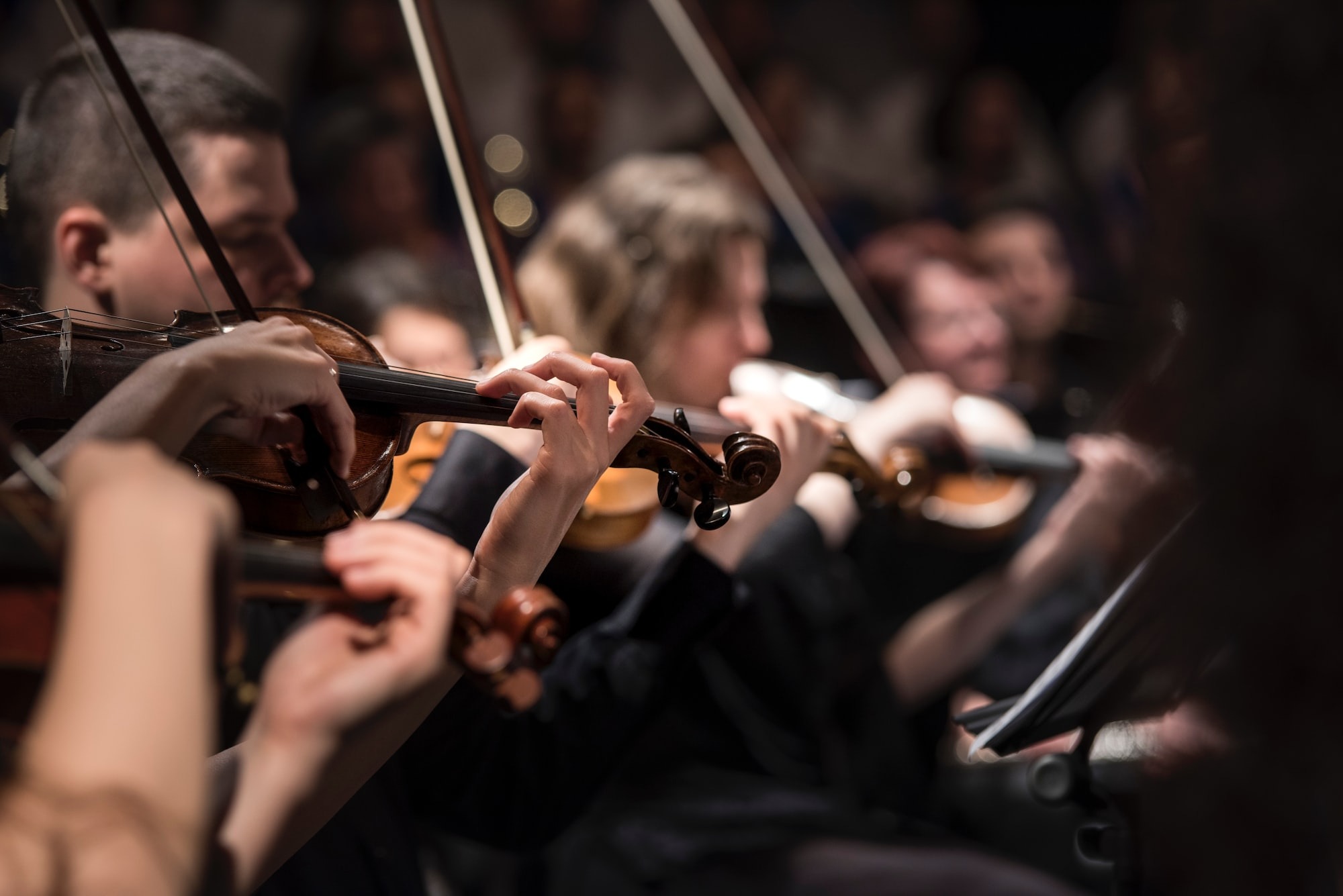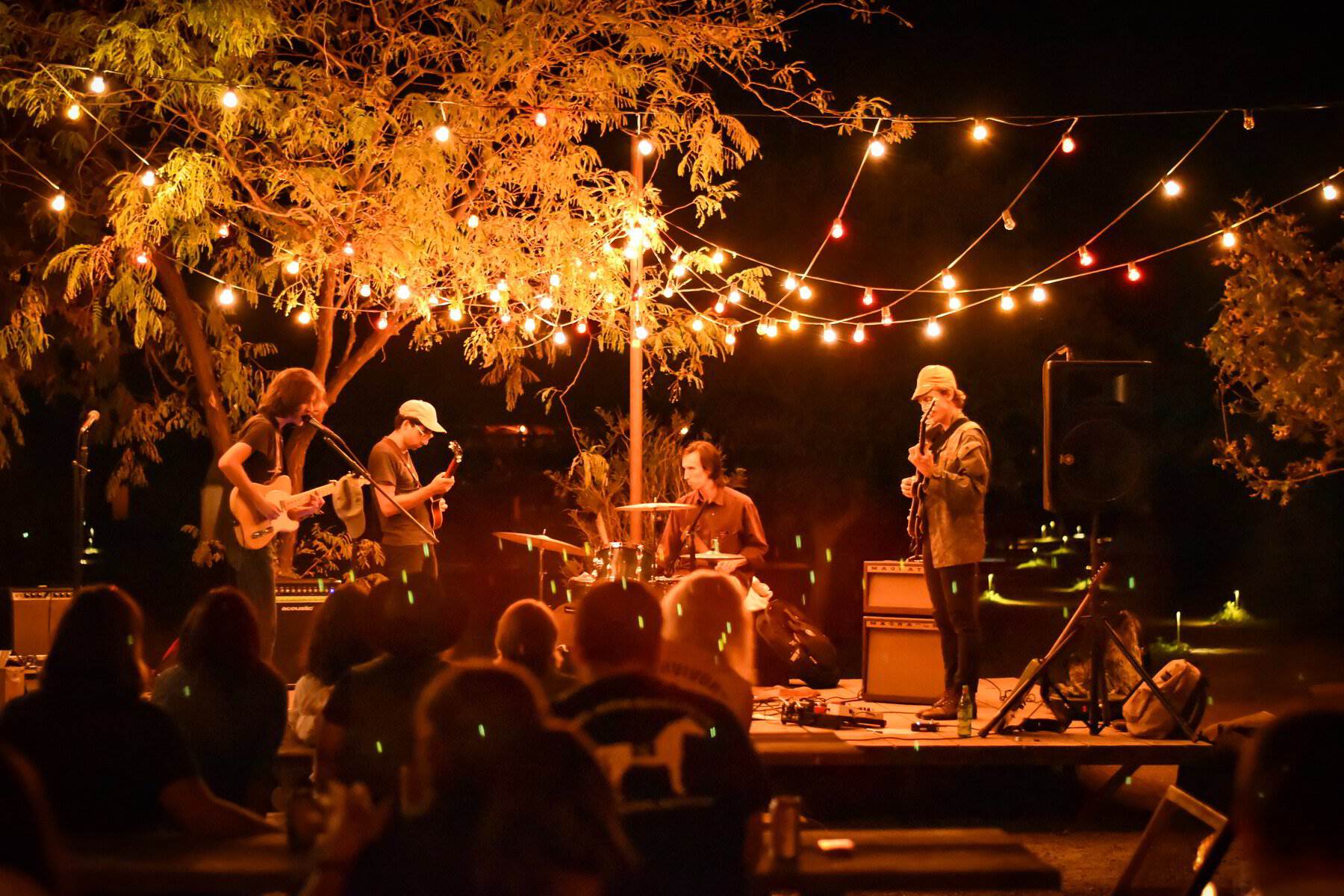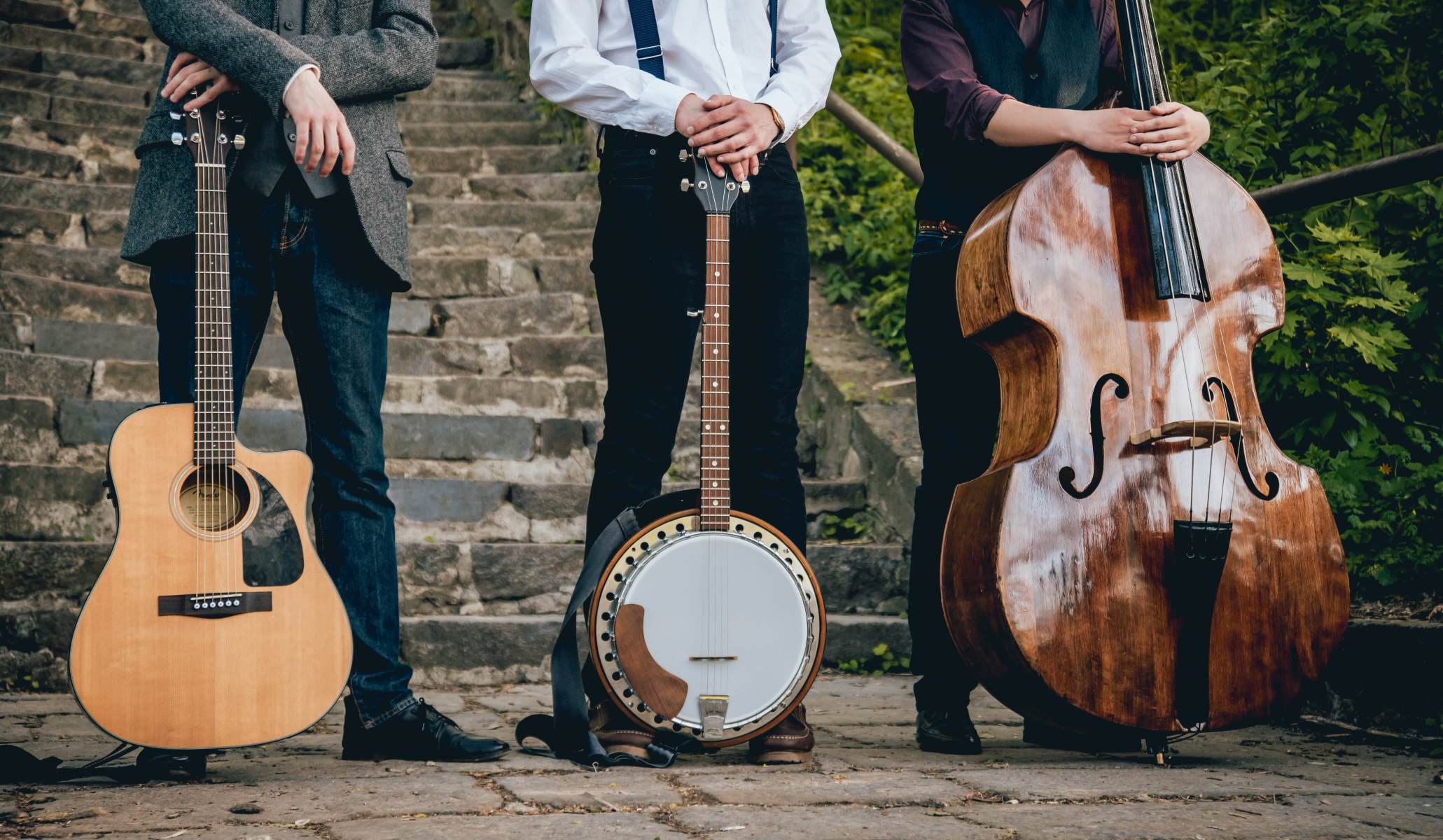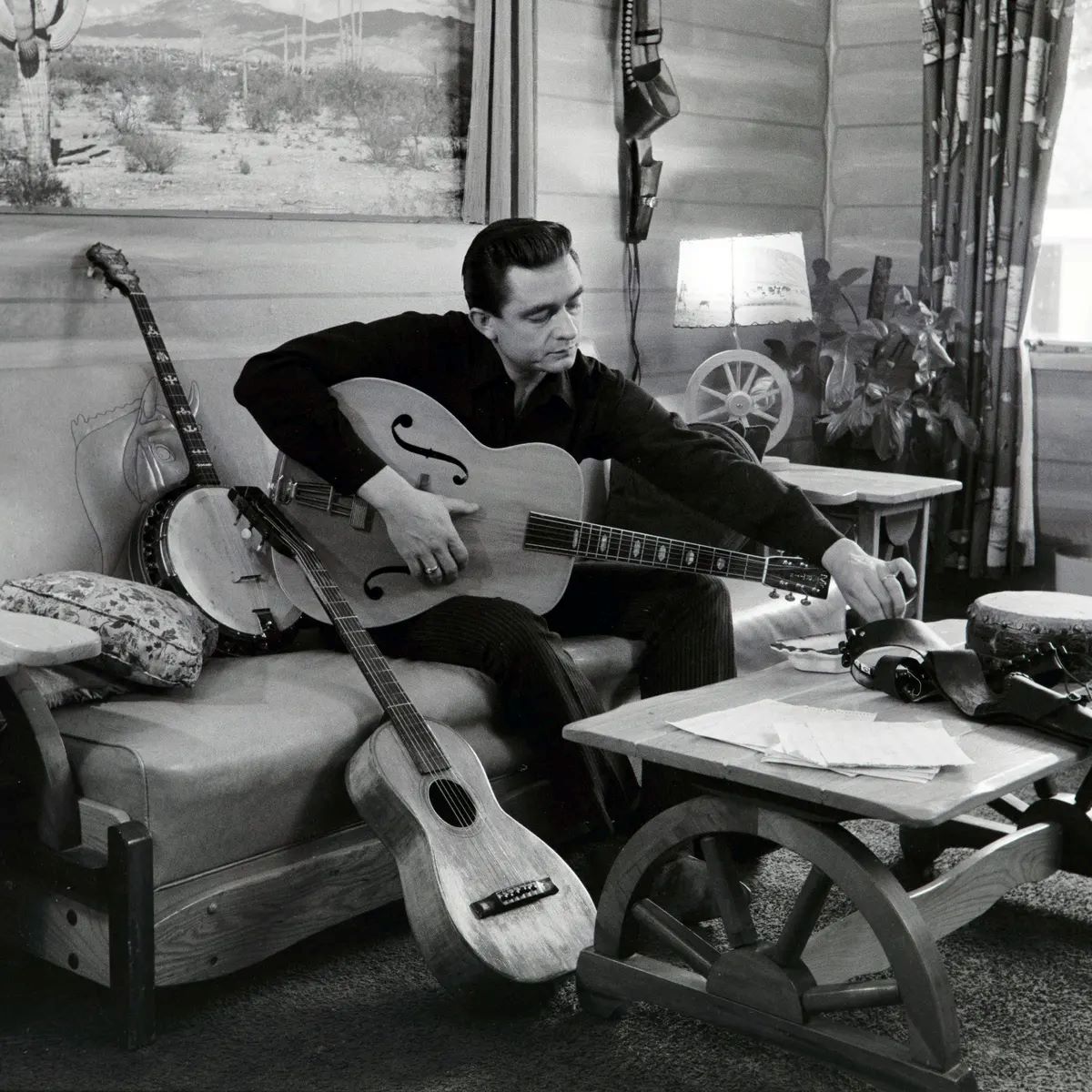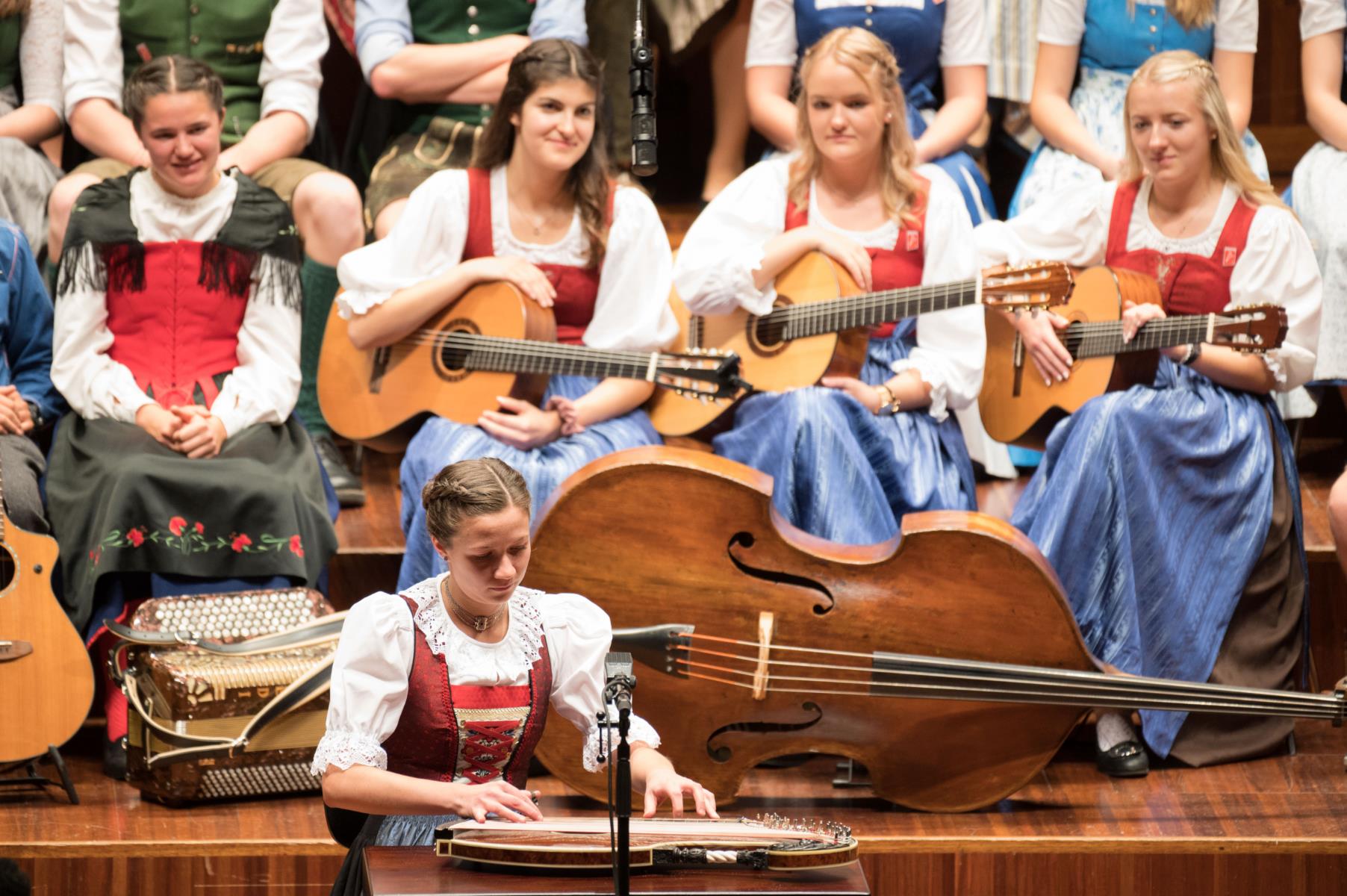

Folk
What Are Characteristics Of Folk Music
Modified: February 15, 2024
Discover the characteristics of folk music and delve into its rich cultural heritage. Explore the diverse sounds and storytelling traditions that define this timeless genre.
(Many of the links in this article redirect to a specific reviewed product. Your purchase of these products through affiliate links helps to generate commission for AudioLover.com, at no extra cost. Learn more)
Table of Contents
Introduction
Folk music is a timeless form of musical expression that connects people across cultures and generations. With its roots deeply embedded in history, folk music has been passed down through oral tradition, preserving the experiences, stories, and emotions of communities from around the world. It holds a special place in the hearts of many, as it reflects the struggles, joys, and everyday lives of ordinary people.
Characterized by its simplicity, authenticity, and emphasis on storytelling, folk music has a unique charm that resonates with a wide range of listeners. Whether it is the soulful melodies of blues, the foot-stomping rhythms of bluegrass, or the heartfelt ballads of traditional folk, each genre carries its own distinct identity while remaining rooted in the broader category of folk music.
In this article, we will explore the characteristics that define folk music and make it a truly remarkable art form. From its historical origins to its influence on other genres, we will delve into the mesmerizing world of folk music and unravel the secrets behind its enduring popularity.
Definition of Folk Music
Folk music, at its core, is a genre of music that reflects the cultural identity and traditions of a particular community or region. It is created and performed by ordinary people, often without formal training, using traditional instruments such as acoustic guitars, banjos, fiddles, and various percussion instruments. What sets folk music apart is its organic and participatory nature, drawing inspiration from the everyday experiences and stories of people.
Unlike popular music, which is often produced for commercial purposes, folk music is deeply rooted in community and tradition. It is handed down from one generation to another through oral tradition, making it a living, ever-evolving art form. Folk songs are often shared in intimate settings such as family gatherings, community events, or around a campfire, fostering a sense of connection and unity.
One key characteristic of folk music is its accessibility. The songs are typically simple in structure, using repetitive melodies and lyrics that are easy to sing along to. This inclusivity allows everyone to join in and participate, creating a shared experience that transcends age, language, and cultural boundaries.
Furthermore, folk music is intimately tied to storytelling. Whether recounting historical events, expressing love and longing, or shedding light on social issues, folk songs serve as vessels for narratives, encapsulating the collective wisdom and struggles of a community. These stories often touch upon universal themes and emotions, allowing listeners to connect with the music on a personal level.
It is important to note that folk music varies greatly from one culture to another. Each region has its own unique folk traditions, reflecting the local customs, language, and heritage. From the haunting melodies of Celtic folk music to the rhythmic exuberance of African folk songs, the diversity within the genre is a testament to its rich tapestry.
In summary, folk music is a genre that celebrates and preserves the cultural heritage of a community. It is characterized by its participatory nature, simple melodies, storytelling elements, and deep connection to the traditions and experiences of ordinary people.
Historical Origins
The historical origins of folk music can be traced back to ancient times, where it emerged as a form of cultural expression among communities around the world. The earliest forms of folk music were deeply rooted in the daily lives and rituals of various societies, serving as a means of storytelling, celebration, and communication.
In Europe, folk music has its roots in the ancient Celtic and Gaelic traditions, with songs and ballads being passed down through generations. These songs often recounted tales of valor, love, and tragedy, preserving the history and heritage of the Celtic people. Similarly, in Africa, folk music played a pivotal role in oral tradition, with songs being used to transmit tribal histories, spiritual beliefs, and social commentary.
Moving forward in time, the influence of folk music extended to the Americas during the era of European colonization. The blending of European, African, and indigenous traditions gave birth to unique folk music styles such as blues, bluegrass, and country. These genres reflected the experiences and struggles of marginalized communities, serving as a voice for the oppressed and disenfranchised.
The folk music revival of the 20th century played a significant role in popularizing the genre on a larger scale. During this period, artists such as Woody Guthrie, Pete Seeger, and Bob Dylan brought folk music into the mainstream consciousness. Their songs, rooted in social activism and political protest, resonated with a generation seeking change and gave new life to the traditional folk music tradition.
Today, folk music continues to evolve and adapt to the modern world while retaining its historical roots. It serves as a vehicle for cultural preservation, as well as a form of artistic expression and storytelling. From traditional folk songs performed at local festivals to contemporary folk artists incorporating new sounds and perspectives, the historical origins of folk music continue to shape its rich and diverse landscape.
Cultural Context
Folk music is deeply intertwined with the cultural context in which it originates. It reflects the values, traditions, and experiences of a particular community or region, serving as a vital part of their identity and heritage. The cultural context of folk music encompasses various aspects, including language, customs, historical events, and social dynamics.
Language plays a crucial role in folk music, with songs often being sung in the native tongue of the community. This not only preserves the linguistic heritage but also adds an authentic and intimate element to the music. It allows listeners to connect with the emotions and stories conveyed in the lyrics, even if they may not fully understand the language itself.
The customs and traditions of a culture are intricately woven into folk music. Rituals, celebrations, and daily life experiences are often depicted in the songs, offering a glimpse into the customs and practices of a particular community. These songs serve as a means of passing down cultural knowledge from one generation to the next, ensuring that the traditions are preserved and honored.
Historical events also leave their mark on folk music, serving as a means of documenting and remembering significant moments in a community’s history. Whether it is the struggle for independence, the experiences of migration, or the hardships faced during times of war, folk songs serve as a testament to the resilience and resilience of the people.
Additionally, folk music reflects the social dynamics and issues prevalent in a society. Songs may address themes such as poverty, inequality, love, and nature, shedding light on the challenges and joys experienced by individuals within the community. This social consciousness within folk music has often made it a powerful tool for advocacy and social change.
The cultural context of folk music also extends to the instruments used in its performance. Traditional instruments that are native to the region play a significant role in shaping the sound and character of folk music. From the fiddle in Irish folk music to the sitar in Indian folk music, each instrument adds a distinct flavor and depth to the music, further contributing to its cultural significance.
Overall, the cultural context of folk music is a vital element that allows it to resonate deeply with both the performers and the audience. It acts as a vessel for cultural expression, preserving traditions, and fostering a sense of community and belonging.
Oral Tradition
One of the defining characteristics of folk music is its connection to oral tradition. Unlike written music, which is typically composed and transcribed, folk music is passed down through generations by word of mouth. It is an art form that thrives on the shared experiences and storytelling abilities of the community, making it a living, breathing tradition.
Oral tradition has been a vital means of cultural preservation for centuries, allowing folk music to transcend time and reach a wider audience. The songs are learned and performed through direct transmission, often in informal settings such as family gatherings, community events, or around the hearth. This intimate and personal nature of passing down the music ensures that it retains its authenticity and carries the emotions and nuances of the original performers.
Within the oral tradition, there is room for improvisation and adaptation. Folk songs can evolve and change over time as they are interpreted by different individuals or communities. Each performance carries the unique imprint and interpretation of the singer, allowing for a continual reinterpretation of the song’s meaning and message.
The reliance on oral tradition gives folk music a sense of immediacy and connection to the community. It creates a close-knit bond between the performer and the audience, as the songs become a shared experience. Listeners become active participants, joining in with singing, clapping, or even dancing along. This participatory aspect of folk music reinforces the communal nature of the art form.
Furthermore, the oral tradition allows folk music to adapt to the needs and concerns of the community. As social, political, or cultural changes occur, the music can reflect and respond to these shifts in society. The oral transmission ensures that the songs remain relevant and continue to resonate with the lived experiences of the people.
Although the advent of modern technology has made written music and recordings more prevalent, oral tradition remains an integral aspect of the folk music landscape. It is a testament to the resilience and power of the human voice and the enduring impact of storytelling in preserving cultural heritage.
In summary, the oral tradition is the lifeblood of folk music, enabling its transmission, evolution, and connection to the community. Through the act of passing down songs by word of mouth, folk music maintains its authenticity, adaptability, and ability to captivate and unite listeners across generations.
Simple Melodies and Lyrics
One of the defining characteristics of folk music is its simplicity in both melodies and lyrics. Unlike complex compositions found in classical or contemporary genres, folk music relies on straightforward melodies and uncomplicated structures that are easy to remember and sing along to.
The melodies in folk music are often rooted in traditional scales and modes, reflecting the cultural heritage of the community. They typically feature repetitive patterns, making the songs instantly recognizable and accessible to listeners. These melodies are often accompanied by simple chord progressions on traditional instruments such as acoustic guitars, banjos, or fiddles.
Similarly, the lyrics of folk songs are straightforward and reflective of everyday experiences, emotions, and observations. They often tell stories, depict characters, or convey messages that resonate with the community. The melodies and lyrics work together harmoniously, with the words enhancing the emotional impact of the music.
This simplicity in melodies and lyrics allows for widespread participation and a sense of inclusivity. Anyone can join in and sing along, regardless of their musical abilities or training. Folk music creates a shared experience where listeners become active participants in the performance, reinforcing the communal aspect of the genre.
The simplicity of folk music also contributes to its versatility and adaptability. The songs can be easily rearranged or personalized by different performers or communities, allowing for creative interpretations and regional variations. It is not uncommon to find different versions of the same folk song with distinct melodies or lyrics, reflecting the unique perspectives and influences of different regions or generations.
Furthermore, the simple melodies and lyrics of folk music enhance the storytelling aspect of the genre. By keeping the musical arrangement minimalistic, the focus is shifted to the narrative and emotions being conveyed. This approach creates an intimate connection between the listener and the story being told, enabling a deeper emotional resonance.
In summary, the simplicity of melodies and lyrics in folk music is an essential element that contributes to its accessibility, inclusivity, and storytelling power. By keeping the music straightforward and relatable, folk music bridges cultural divides and invites listeners to engage with the shared experiences and emotions of a community.
Emphasis on Storytelling
Folk music has a rich tradition of storytelling, with a profound emphasis on conveying narratives, experiences, and emotions. Unlike other genres where the focus may reside primarily on musical virtuosity or experimental soundscapes, folk music places storytelling at the forefront, using its melodies and lyrics to transport listeners on a journey.
At the core of folk music is the power of storytelling to connect people with universal themes and emotions. Through the lyrics and melodies, folk songs recount tales of love, loss, historical events, societal issues, and the everyday lives of ordinary people. These stories are often deeply rooted in the cultural context and traditions of the community, providing a unique insight into their collective history and values.
What sets folk music apart is its ability to encapsulate complex narratives within the confines of a song. Each verse and chorus unfolds like a chapter in a book, painting vivid images and evoking a range of emotions. The stories told through folk music often touch upon shared human experiences, allowing listeners to find personal connections and meaning in the music.
Furthermore, folk songs often serve as a means of preserving cultural heritage and passing down oral traditions. They may recount historical events, myths, or legends, acting as a living record of a community’s history. By perpetuating these stories through song, folk music plays a vital role in ensuring that cultural knowledge is preserved and celebrated.
The storytelling aspect of folk music goes beyond mere entertainment; it can also serve as a medium for social commentary and protest. Many folk songs have played a significant role in advocating for social justice, reflecting on political issues, and giving voice to marginalized communities. These songs become anthems of resistance and solidarity, inspiring change and fostering a sense of unity among listeners.
In an increasingly digital and fragmented world, folk music’s emphasis on storytelling serves as a reminder of the power of human connection and the importance of preserving our shared stories. It brings people together, both in its creation and in the act of listening, creating a sense of community and fostering empathy.
In summary, storytelling lies at the heart of folk music. Its emphasis on narratives, experiences, and emotions allows listeners to connect with the music on a profound level. By conveying stories through melodies and lyrics, folk music preserves cultural heritage, provides social commentary, and brings people together in a shared experience of storytelling.
Use of Traditional Instruments
One of the distinctive features of folk music is its use of traditional instruments, which contribute to the unique sound and character of the genre. These instruments are deeply rooted in the cultural heritage of the community and play a significant role in shaping the overall musical experience.
Traditional instruments used in folk music vary across different regions and cultures. For example, the acoustic guitar is a staple in many folk music traditions, providing a rhythmic and harmonic foundation for the melodies. The banjo, with its distinct twang, is commonly associated with genres like bluegrass and Appalachian folk music.
Fiddles are a prominent instrument in Celtic and American folk music, adding a melodic and soulful element to the music. Other instruments commonly found in folk music include mandolins, harmonicas, accordions, flutes, and various percussion instruments like tambourines or bodhráns.
The use of traditional instruments lends an authentic and cultural depth to the music, connecting it to the roots of the community. These instruments are often handmade or crafted using traditional methods, ensuring a unique quality and craftsmanship in their sound.
Moreover, traditional instruments in folk music are not limited to standard tuning or playing techniques. Many musicians explore alternative tunings, fingerpicking styles, or bowing techniques that have been passed down through generations. This exploration adds a distinctive flavor to the music and allows for personal expression and interpretation.
While modern instruments and technology have become more accessible, the use of traditional instruments in folk music remains cherished and celebrated. It honors the traditions and musical legacies of the past, connecting the present with the roots of the genre.
The use of traditional instruments also fosters a sense of community and shared heritage. When musicians gather to perform folk music, they often play in informal settings, such as jam sessions or gatherings, where everyone can join in. The sound of traditional instruments creates a nostalgic and welcoming ambiance that encourages participation and engagement.
Furthermore, the choice to use traditional instruments in folk music speaks to the desire to maintain authenticity and allow the music to convey a genuine cultural expression. The unique timbres, textures, and nuances of these instruments add depth and richness to the music, enhancing the storytelling aspect and emotional impact.
In summary, the use of traditional instruments in folk music is a fundamental aspect of the genre. These instruments connect the music to its cultural roots, provide a distinct sound, and foster a sense of community and shared heritage. They preserve the traditions and values of the past while allowing for personal expression and interpretation in the present.
Regional and Local Variations
Folk music exhibits a remarkable diversity of regional and local variations, reflecting the unique cultural traditions and identities of different communities around the world. Each region and locality within a country contributes its own distinct style, melodies, and lyrics to the broader genre of folk music.
These regional variations are shaped by a multitude of factors, including geography, history, language, and cultural practices. For example, the Celtic folk music of Ireland, Scotland, and Wales is renowned for its haunting melodies, intricate rhythms, and lyrical storytelling. In contrast, the Appalachian folk music of the United States has its distinctive sound with influences from Scottish and Irish traditions blended with African-American musical elements.
Within a single country, different regions often have their distinct folk music styles and instruments. For instance, in India, each state has its vibrant folk music traditions, such as Bhangra in Punjab, Bihu in Assam, or Garba in Gujarat. Similarly, in Spain, the folk music of Andalusia differs from that of Catalonia or Galicia.
Local variations also arise within regions, with individual towns or communities contributing their own unique elements to the folk music. These variations can stem from local customs, dialects, or historical events specific to the area. It enriches the fabric of folk music and ensures that it continues to evolve and adapt to the changing times.
Furthermore, regional and local variations extend beyond melodies and lyrics. They also encompass dance styles, instruments unique to specific areas, and performance traditions. Folk music often goes hand in hand with traditional dance forms, with each region having its specific dances that complement the music. The instruments used can also vary, with some regions favoring certain instruments or incorporating unique variations of traditional instruments.
Regional and local variations within folk music contribute to the preservation of cultural expressions and identities. They celebrate the diversity of human experiences and promote a sense of pride and belonging among different communities. These variations act as windows into the traditions, folklore, and history of a specific region, allowing for a deeper understanding and appreciation of local cultures.
The exploration and recognition of regional and local variations within folk music are essential to prevent homogenization and maintain the authenticity of different traditions. It ensures that the vibrant tapestry of folk music continues to thrive, evolve, and inspire new generations of musicians and audiences.
In summary, the regional and local variations within folk music highlight the unique cultural traditions and identities of different communities. By embracing and celebrating these variations, we gain a deeper appreciation of the wealth and diversity within the genre while preserving the rich heritage and expressions of local cultures.
Influence on Other Genres
Folk music has exerted a significant influence on various other genres, leaving a lasting legacy and shaping the development of music worldwide. From rock and pop to country and blues, the impact of folk music can be heard in the melodies, lyrics, and storytelling elements of these genres.
One notable genre that owes a debt to folk music is rock music. In the 1960s, the folk music revival brought folk sounds to the mainstream, with artists like Bob Dylan and Simon & Garfunkel leading the way. Their introspective lyrics, acoustic guitar-driven melodies, and socially conscious messages influenced a generation of rock musicians, who incorporated folk elements into their own music.
Similarly, country music, with its focus on storytelling and heartfelt emotions, draws heavily from the traditions of folk music. From the early pioneers like Hank Williams to contemporary country artists, the influence of folk music can be heard in the narratives, twangy instruments, and heartfelt vocals that characterize the genre.
Blues music, born out of the African-American experience in the United States, also shares a deep connection with folk music. Both genres capture the struggles, joys, and sorrows of everyday life and draw from shared musical traditions. The acoustic guitars, soulful vocals, and emphasis on personal expression found in folk music have left their mark on the blues, influencing artists like Robert Johnson and Muddy Waters.
The influence of folk music extends beyond Western genres as well. World music genres, such as African, Middle Eastern, or Latin American music, often incorporate folk elements from their respective cultures. Traditional instruments, distinct rhythmic patterns, and storytelling traditions all find their way into these genres, highlighting the universal appeal and influence of folk music.
Folk music’s impact on other genres is not limited to specific sounds or musical elements; it also extends to the spirit of authenticity and connection to the community. Many artists across different genres aim to capture the rawness and intimacy associated with folk music, often opting for stripped-down arrangements, personal lyrics, and a more grassroots approach to their music.
The influence of folk music on other genres underscores the enduring power and relevance of the genre. Its focus on storytelling, emotional depth, and authenticity resonates with musicians and audiences alike, influencing the development of music in innovative and meaningful ways.
In summary, folk music has had a profound influence on various genres, including rock, country, blues, and world music. Its emphasis on storytelling, raw emotions, and a deep connection to the community has left an indelible mark on the musical landscape, shaping the development of music and inspiring generations of musicians.
Connection to Community and Identity
Folk music has long served as a powerful catalyst for fostering a sense of community and shaping cultural identity. Its ability to bring people together, both as performers and listeners, creates an intimate bond and a shared experience that transcends boundaries and unites individuals within a community.
One of the unique aspects of folk music is its participatory nature. Whether it’s a group of friends, families, or an entire community, folk music often finds its home in communal gatherings and events. Whether it’s a barn dance, a folk festival, or a jam session, folk music provides opportunities for people to come together and actively participate in the music-making process. It becomes a collective expression of joy, celebration, or even solace during times of hardship.
Folk music also plays a significant role in forging cultural identity. It serves as a means of preserving and passing down cultural traditions, customs, and stories from one generation to the next. Through folk songs, communities can maintain a connection to their roots and sustain a sense of continuity with their heritage.
Moreover, folk music often reflects the values and experiences of a specific community. It becomes a vehicle for expressing local customs, rituals, historical events, and social issues. By sharing these stories through music, folk songs reinforce the shared history and shared struggles of individuals within the community.
The connection between folk music and identity is not limited to the community level. It can extend to larger cultural, ethnic, or regional identities. For example, Celtic folk music connects people with their Celtic heritage, while Americana folk music links individuals to their American roots. The music becomes a source of pride, a way to celebrate, and a means of uniting people who share a common sense of identity.
Through folk music, communities can also gain a sense of empowerment and resilience. During times of social or political upheaval, folk songs have often served as anthems of protest, giving voice to the marginalized and disenfranchised. These songs become symbols of resistance, unity, and hope, providing strength and inspiration to those who feel marginalized or oppressed.
Furthermore, folk music can act as a bridge between different communities and cultures. It can foster understanding, appreciation, and respect for diverse traditions and can be a powerful tool for promoting cultural exchange and tolerance. and in some cases, folk fusion has led to the emergence of new sub-genres that blend elements of different cultures.
In summary, folk music’s connection to community and identity is a fundamental aspect of its essence. It brings people together, preserves cultural traditions, and provides a means for self-expression and collective celebration. It serves as a powerful reminder of the importance of shared experiences, heritage, and the bonds that unite us.
Conclusion
Folk music holds a special place in the world of music, capturing the essence of cultural heritage, storytelling, and community connection. Defined by its simplicity, authenticity, and emphasis on narratives, folk music weaves a tapestry of diverse traditions and regional variations.
From its historical origins to its influence on other genres, folk music has left an indelible mark on the musical landscape. It has inspired countless musicians, shaped the development of genres such as rock, country, and blues, and provided a platform for social commentary and protest.
The oral tradition of folk music perpetuates its cultural significance, allowing the music to be passed down from generation to generation. The use of traditional instruments adds depth and cultural richness to the music, while the simplicity of melodies and lyrics invites listeners to participate in the shared experience.
Folk music is not just about melodies and rhythms; it is a powerful tool for community building and cultural preservation. It fosters a sense of belonging, connects individuals with their heritage, and contributes to the formation of cultural identities.
Furthermore, folk music serves as a testament to the power of storytelling, capturing the joys, sorrows, struggles, and triumphs of everyday life. It has the ability to evoke deep emotions, transport listeners through time and space, and remind us of the power of human connection.
As we celebrate the diversity and integrity of folk music, it is important to recognize its significant influence and lasting impact. By understanding and appreciating the characteristics and cultural context of folk music, we can gain a deeper understanding of our shared humanity and the diverse tapestry of human experiences.
Whether it is the haunting melodies of Celtic folk music, the soulful rhythms of blues, or the heartfelt ballads of traditional folk, the essence of folk music remains timeless and resonates with audiences around the world. Its enduring charm lies in its ability to preserve traditions, foster community, and provide a medium for personal and collective expression.
As we embrace folk music, we embrace the stories, emotions, and experiences that connect us as human beings. May the magic and beauty of folk music continue to inspire generations to come.

